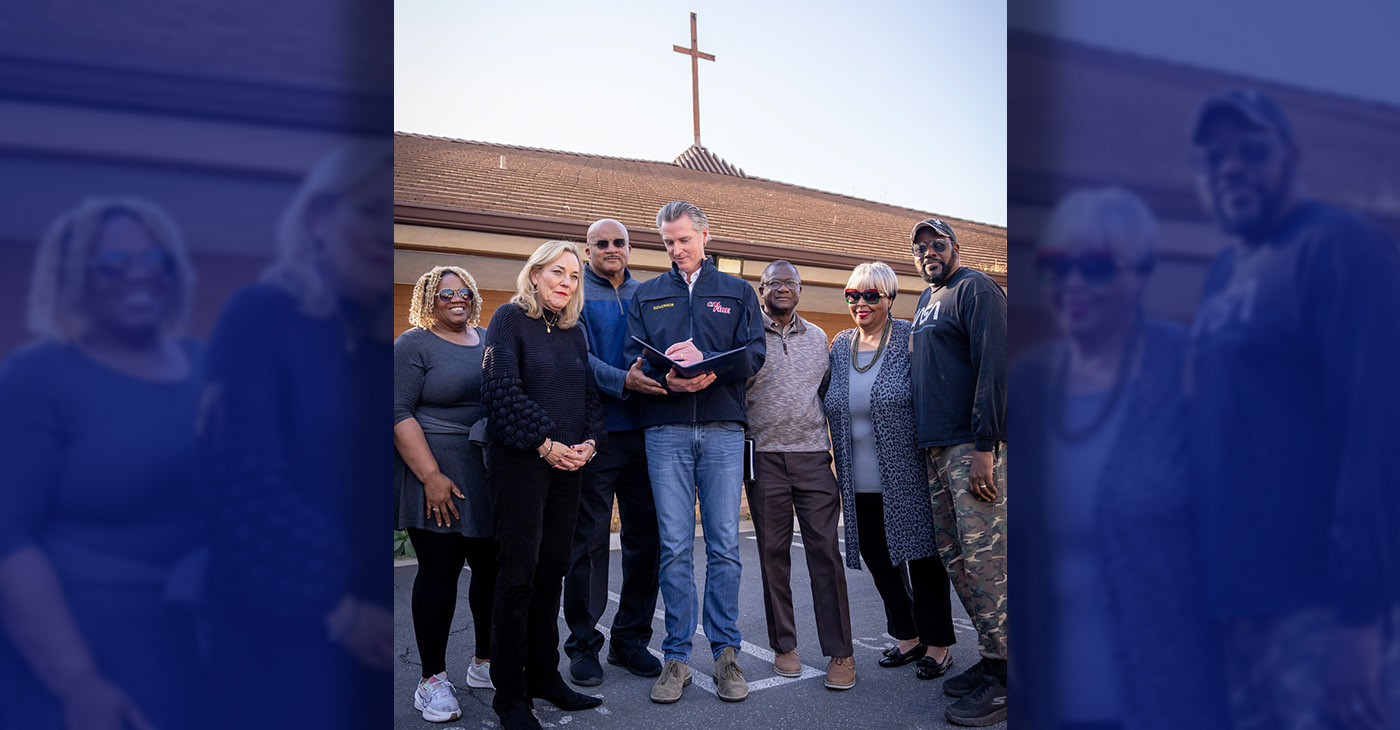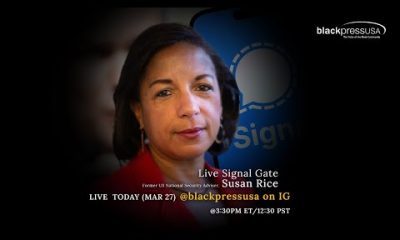Community
Missing & Forgotten: D.C. Black Girls Lost
WASHINGTON INFORMER — A year ago, District residents were in an uproar, as the story of missing Black and Latina girls was met with near-silence from the media and apparent ignorance from the Metropolitan Police Department as officials attempted to rationalize the dozens of disappearances.
By Stacy Brown
A year ago, District residents were in an uproar, as the story of missing Black and Latina girls was met with near-silence from the media and apparent ignorance from the Metropolitan Police Department as officials attempted to rationalize the dozens of disappearances.
Today, the missing in D.C., like those around the nation, receive little attention — even as young African-American women and girls disappear at an alarming rate.
Among the many from the District listed as missing by the nonprofit Black and Missing Foundation are Pamela J. Butler, missing since Feb. 14, 2009, Unique Harris, missing since Oct. 10, 2010, and Relisha Tenau Rudd, missing since March 1, 2014.
While police have few — if any — leads or answers, these girls join an ever-growing list of Black girls who are gone and sadly forgotten by mainstream media where coverage is manipulated by the latest thong or see-through attire worn by a Kardashian or the most recent tantrum thrown by President Donald Trump.
And as Trump cries that a border wall is needed to eliminate an imaginary crisis, organizations such as the Black and Missing But Not Forgotten, the Black and Missing Foundation (BAM) in Landover Hills, Maryland, and the National Center for Missing and Exploited Children (NCMEC) in Alexandria, Virginia, struggle to shed light on the real emergency that is of the nation’s missing.
More than 424,066 girls of all races have gone missing since the beginning of 2018, according to NCMEC. More than half of that total are women and girls of color, according to BAM, which, like NCMEC, rely on statistics from the FBI.
“The majority of these children most likely come from marginalized communities, and are primarily low-income people of color,” said Dr. Ronnie A. Dunn, an interim chief diversity and inclusion officer and associate professor of urban studies at Cleveland State University.
“Given this nation’s racially stratified socioeconomic class hierarchy, as evidenced throughout institutions in America where poor children of color have worst outcomes on all quality of life indicators, their lives are devalued in relation to upper class white youth,” said Dunn, who has authored two books, “Race Profiling: Causes & Consequences,” and “Boycotts, Busing, & Beyond: The History & Implications of School Desegregation in the Urban North.”
“And even within that, while this nation espouses the valuing of children in general, this does not appear to be the reality as evidenced by the failure to act in the face of the onslaught of mass school shootings from Sandy Hook to Stoneman Douglas where the majority of those killed were middle class white youth,” Dunn said. “Therefore, we see less media attention paid to missing children, particularly those of color.”
The ignorance toward the Black and missing isn’t a new trend. Black and Missing But Not Forgotten, BAM and NCMEC each have kept a database that dates back decades.
For instance, Margaret R. Dash disappeared from her home in Clearwater, Florida, on June 14, 1974. Today, she would be 83.
Ethel Louise Atwell disappeared from Staten Island, N.Y., on Oct. 24, 1978. If still alive, Atwell would be 86.
Jeffrey Lynn Smith, who today would be 49, disappeared on Dec. 4, 1985, from her Hot Springs, Arkansas, home and hasn’t been heard from since.
Other Black women and girls who have disappeared over the past five decades, according to BAM: Cynthia Renae Rodgers of Forestville, Maryland; Beverly Gail Johnson-Sabo of Ventura, California; Trina Ann Winston of South Bend, Indiana; Erica Heather Smith of Ashburn, Virginia; Debra Dianne Sellars of Burlington, North Carolina.; Bianca Lilly Jones of Detroit; Crystal Keyona Anderson of New Carrollton, Maryland; Sandra Jean Cunningham of New York City; Yamisha Thomas of Columbus, Georgia; Mitrice Richardson of Los Angeles; Priscilla Ann Rogers of Wilmington, North Carolina; Rochelle Denise Battle of Baltimore; Leslie Marva Adams of Atlanta; Chantel Bryant of Virginia Beach, Virginia; Nancie Carolyn Walker of Chicago; Verlisha Littlejohn of Gaffney, South Carolina; Theresa Bunn of Chicago; and Barbara Dreher of Washington, D.C.
“I’m a forensic psychiatrist and legal analyst on television, so I pay attention to media reports of crimes and missing children,” said Dr. Carole Lieberman. “The media doesn’t do enough reporting of all the missing children, especially Black children … this tells the viewer that it’s more important to find white children.
“There aren’t even any — or many — pictures on milk cartons of missing children anymore because they decided it was too upsetting to children eating breakfast,” Lieberman said. “We need to do more to find missing children and do more to stop the family problems such as abuse that causes them to be vulnerable to predators or leave home to begin with.”
This article originally appeared in the Washington Informer.
Activism
Gov. Newsom Approves $170 Million to Fast Track Wildfire Resilience
AB 100 approves major investments in regional conservancies across the state, including over $30 million each for the Sierra Nevada, Santa Monica Mountains, State Coastal, and San Gabriel/Lower LA Rivers and Mountains conservancies. An additional $10 million will support wildfire response and resilience efforts.

By Bo Tefu
California Black Media
With wildfire season approaching, last week Gov. Gavin Newsom signed Assembly Bill (AB) 100, unlocking $170 million to fast-track wildfire prevention and forest management projects — many of which directly protect communities of color, who are often hardest hit by climate-driven disasters.
“With this latest round of funding, we’re continuing to increase the speed and size of forest and vegetation management essential to protecting communities,” said Newsom when he announced the funding on April 14.
“We are leaving no stone unturned — including cutting red tape — in our mission to ensure our neighborhoods are protected from destructive wildfires,” he said.
AB 100 approves major investments in regional conservancies across the state, including over $30 million each for the Sierra Nevada, Santa Monica Mountains, State Coastal, and San Gabriel/Lower LA Rivers and Mountains conservancies. An additional $10 million will support wildfire response and resilience efforts.
Newsom also signed an executive order suspending certain regulations to allow urgent work to move forward faster.
This funding builds on California’s broader Wildfire and Forest Resilience Action Plan, a $2.7 billion effort to reduce fuel loads, increase prescribed burning, and harden communities. The state has also launched new dashboards to keep the public informed and hold agencies accountable.
California has also committed to continue investing $200 million annually through 2028 to expand this effort, ensuring long-term resilience, particularly in vulnerable communities.
Activism
California Rideshare Drivers and Supporters Step Up Push to Unionize
Today in California, over 600,000 rideshare drivers want the ability to form or join unions for the sole purpose of collective bargaining or other mutual aid and protection. It’s a right, and recently at the State Capitol, a large number of people, including some rideshare drivers and others working in the gig economy, reaffirmed that they want to exercise it.

By Antonio Ray Harvey
California Black Media
On July 5, 1935, President Franklin D. Roosevelt signed into federal law the National Labor Relations Act (NLRA). Also known as the “Wagner Act,” the law paved the way for employees to have “the right to self-organization, to form, join, or assist labor organizations,” and “to bargain collectively through representatives of their own choosing, according to the legislation’s language.
Today in California, over 600,000 rideshare drivers want the ability to form or join unions for the sole purpose of collective bargaining or other mutual aid and protection. It’s a right, and recently at the State Capitol, a large number of people, including some rideshare drivers and others working in the gig economy, reaffirmed that they want to exercise it.
On April 8, the rideshare drivers held a rally with lawmakers to garner support for Assembly Bill (AB) 1340, the “Transportation Network Company Drivers (TNC) Labor Relations Act.”
Authored by Assemblymembers Buffy Wicks (D-Oakland) and Marc Berman (D-Menlo Park), AB 1340 would allow drivers to create a union and negotiate contracts with industry leaders like Uber and Lyft.
“All work has dignity, and every worker deserves a voice — especially in these uncertain times,” Wicks said at the rally. “AB 1340 empowers drivers with the choice to join a union and negotiate for better wages, benefits, and protections. When workers stand together, they are one of the most powerful forces for justice in California.”
Wicks and Berman were joined by three members of the California Legislative Black Caucus (CLBC): Assemblymembers Tina McKinnor (D-Inglewood), Sade Elhawary (D-Los Angeles), and Isaac Bryan (D-Ladera Heights).
Yvonne Wheeler, president of the Los Angeles County Federation of Labor; April Verrett, President of Service Employees International Union (SEIU); Tia Orr, Executive Director of SEIU; and a host of others participated in the demonstration on the grounds of the state capitol.
“This is not a gig. This is your life. This is your job,” Bryan said at the rally. “When we organize and fight for our collective needs, it pulls from the people who have so much that they don’t know what to do with it and puts it in the hands of people who are struggling every single day.”
Existing law, the “Protect App-Based Drivers and Services Act,” created by Proposition (Prop) 22, a ballot initiative, categorizes app-based drivers for companies such as Uber and Lyft as independent contractors.
Prop 22 was approved by voters in the November 2020 statewide general election. Since then, Prop 22 has been in court facing challenges from groups trying to overturn it.
However, last July, Prop 22 was upheld by the California Supreme Court last July.
In a 2024, statement after the ruling, Lyft stated that 80% of the rideshare drivers they surveyed acknowledged that Prop 22 “was good for them” and “median hourly earnings of drivers on the Lyft platform in California were 22% higher in 2023 than in 2019.”
Wicks and Berman crafted AB 1340 to circumvent Prop 22.
“With AB 1340, we are putting power in the hands of hundreds of thousands of workers to raise the bar in their industry and create a model for an equitable and innovative partnership in the tech sector,” Berman said.
Activism
California Holds the Line on DEI as Trump Administration Threatens School Funding
The conflict began on Feb. 14, when Craig Trainor, acting assistant secretary for civil rights at the U.S. Department of Education (DOE), issued a “Dear Colleague” letter warning that DEI-related programs in public schools could violate federal civil rights law. The letter, which cited Title VI of the Civil Rights Act and the 2023 Supreme Court ruling in Students for Fair Admissions v. Harvard, which ended race-conscious admissions, ordered schools to eliminate race-based considerations in areas such as admissions, scholarships, hiring, discipline, and student programming.

By Joe W. Bowers Jr
California Black Media
California education leaders are pushing back against the Trump administration’s directive to dismantle diversity, equity, and inclusion (DEI) programs in its K-12 public schools — despite threats to take away billions in federal funding.
The conflict began on Feb. 14, when Craig Trainor, acting assistant secretary for civil rights at the U.S. Department of Education (DOE), issued a “Dear Colleague” letter warning that DEI-related programs in public schools could violate federal civil rights law. The letter, which cited Title VI of the Civil Rights Act and the 2023 Supreme Court ruling in Students for Fair Admissions v. Harvard, which ended race-conscious admissions, ordered schools to eliminate race-based considerations in areas such as admissions, scholarships, hiring, discipline, and student programming.
According to Trainor, “DEI programs discriminate against one group of Americans to favor another.”
On April 3, the DOE escalated the pressure, sending a follow-up letter to states demanding that every local educational agency (LEA) certify — within 10 business days — that they were not using federal funds to support “illegal DEI.” The certification requirement, tied to continued federal aid, raised the stakes for California, which receives more than $16 billion annually in federal education funding.
So far, California has refused to comply with the DOE order.
“There is nothing in state or federal law that outlaws the broad concepts of ‘diversity,’ ‘equity,’ or ‘inclusion,’” wrote David Schapira, California’s Chief Deputy Superintendent of Public Instruction, in an April 4 letter to superintendents and charter school administrators. Schapira noted that all of California’s more than 1,000 traditional public school districts submit Title VI compliance assurances annually and are subject to regular oversight by the state and the federal government.
In a formal response to the DOE on April 11, the California Department of Education, the State Board of Education, and State Superintendent of Public Instruction Tony Thurmond collectively rejected the certification demand, calling it vague, legally unsupported, and procedurally improper.
“California and its nearly 2,000 LEAs (including traditional public schools and charter schools) have already provided the requisite guarantee that its programs and services are, and will be, in compliance with Title VI and its implementing regulation,” the letter says.
Thurmond added in a statement, “Today, California affirmed existing and continued compliance with federal laws while we stay the course to move the needle for all students. As our responses to the United States Department of Education state and as the plain text of state and federal laws affirm, there is nothing unlawful about broad core values such as diversity, equity and inclusion. I am proud of our students, educators and school communities who continue to focus on teaching and learning, despite federal actions intended to distract and disrupt.”
California officials say that the federal government cannot change existing civil rights enforcement standards without going through formal rule-making procedures, which require public notice and comment.
Other states are taking a similar approach. In a letter to the DOE, Daniel Morton-Bentley, deputy commissioner and counsel for the New York State Education Department, wrote, “We understand that the current administration seeks to censor anything it deems ‘diversity, equity & inclusion.’ But there are no federal or State laws prohibiting the principles of DEI.”
-

 Activism4 weeks ago
Activism4 weeks agoOakland Post Endorses Barbara Lee
-

 Activism4 weeks ago
Activism4 weeks agoOakland Post: Week of April 2 – 8, 2025
-

 Activism2 weeks ago
Activism2 weeks agoOakland Post: Week of April 9 – 15, 2025
-

 #NNPA BlackPress3 weeks ago
#NNPA BlackPress3 weeks agoTrump Profits, Black America Pays the Price
-

 #NNPA BlackPress3 weeks ago
#NNPA BlackPress3 weeks agoHarriet Tubman Scrubbed; DEI Dismantled
-

 #NNPA BlackPress3 weeks ago
#NNPA BlackPress3 weeks agoTrump Targets a Slavery Removal from the National Museum of African-American History and Culture
-

 #NNPA BlackPress3 weeks ago
#NNPA BlackPress3 weeks agoNew York Stands Firm Against Trump Administration’s Order to Abandon Diversity in Schools
-

 #NNPA BlackPress4 weeks ago
#NNPA BlackPress4 weeks agoLawmakers Greenlight Reparations Study for Descendants of Enslaved Marylanders


























































